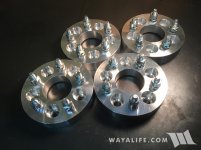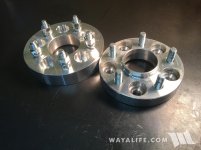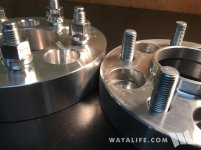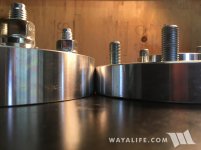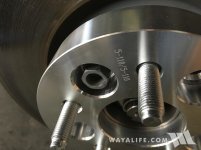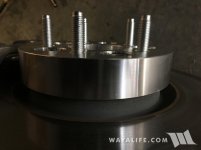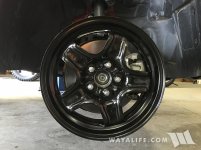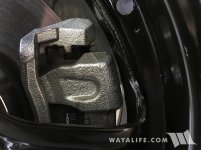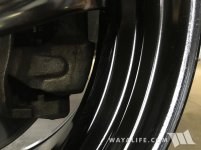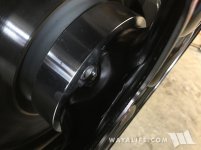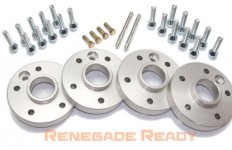Okay, so I've always known that there might be some issues running a set of 16" wheels on a Jeep Renegade Trailhawk due to the larger brake calipers it comes with but I wanted to know exactly what they were and what if anything could be done to address them. Of course, the only real reason why 16" wheels are so desirable is because there are a lot more aggressive tire choices available in that size whereas there's next to nothing in a 17" wheel unless you go with a much bigger tire. That being said, here are some shots that that will help illustrate the problems you will encounter.
As some of you know, we decided to pick up a set of 16x5.5 Chevy HHR steel wheels as they come in a 5x110 bolt patter, have a 65.1 bore and come with a 42mm offset which is just 1mm more than a stock wheel. For those of you who are interested, here's where I got mine:
http://www.ebay.com/itm/191774275540?_trksid=p2057872.m2749.l2649&ssPageName=STRK:MEBIDX:IT
That being said, here's what it would look like installed as is.
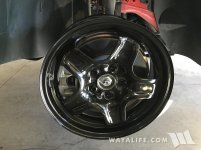
And, here are a few shots that will show you where the problem is with the brake caliper making contact with the wheel.
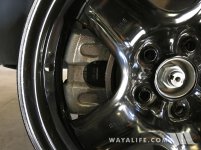
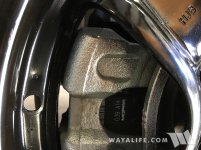
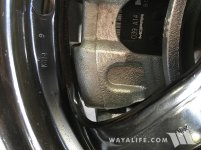
Again, these are steel wheels and I can't imagine how any aluminum wheel would fit even with a wheel spacer. While you could easily grind the brake calipers down a bit to offer more clearance, you would still run into an issue with the wheels being too close to the struts. As you can see below, the wheel just barely clears but your tire would sit extremely close to the strut.
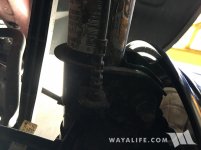
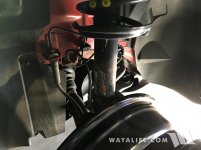
Now, I should note that we do have 1" wheel spacers and initially, I thought we could use them to help things out but as luck would have it, they're just a bit too thin and the heads of the lug bolts stick out 7/32" past the mounting surface.
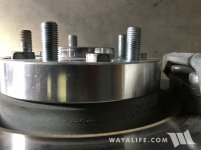
On a set of factory wheels, this is no big deal as there are recesses in it that will clear the heads of the bolts.
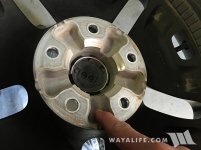
Problem is, on a set of steel wheels and really, on a lot of aluminum wheels, they don't have this recess and so the spacers won't work. Needless to say, I've just placed an order for a set of 1.25" wheel spacers. And, even with them, I may still do a touch of grinding on the brake calipers just to offer a bit more breathing room.
As some of you know, we decided to pick up a set of 16x5.5 Chevy HHR steel wheels as they come in a 5x110 bolt patter, have a 65.1 bore and come with a 42mm offset which is just 1mm more than a stock wheel. For those of you who are interested, here's where I got mine:
http://www.ebay.com/itm/191774275540?_trksid=p2057872.m2749.l2649&ssPageName=STRK:MEBIDX:IT
That being said, here's what it would look like installed as is.

And, here are a few shots that will show you where the problem is with the brake caliper making contact with the wheel.



Again, these are steel wheels and I can't imagine how any aluminum wheel would fit even with a wheel spacer. While you could easily grind the brake calipers down a bit to offer more clearance, you would still run into an issue with the wheels being too close to the struts. As you can see below, the wheel just barely clears but your tire would sit extremely close to the strut.


Now, I should note that we do have 1" wheel spacers and initially, I thought we could use them to help things out but as luck would have it, they're just a bit too thin and the heads of the lug bolts stick out 7/32" past the mounting surface.

On a set of factory wheels, this is no big deal as there are recesses in it that will clear the heads of the bolts.

Problem is, on a set of steel wheels and really, on a lot of aluminum wheels, they don't have this recess and so the spacers won't work. Needless to say, I've just placed an order for a set of 1.25" wheel spacers. And, even with them, I may still do a touch of grinding on the brake calipers just to offer a bit more breathing room.

